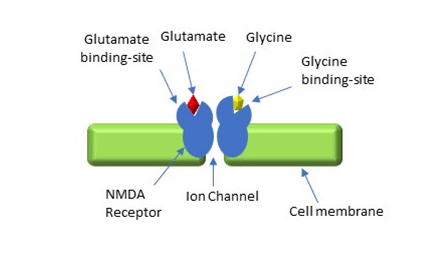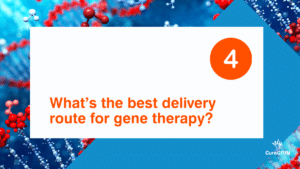Understanding NMDA Receptors: A Guide for GRIN Disorder Families
Share This Post

By: Meagan Collins
You’ve probably heard that GRIN genes contain the DNA code to build NMDA receptors (NMDARs), but what is the NMDA receptor and why is it so important? NMDARs play a critical role in learning and memory, which is why most patients with GRIN Disorder have intellectual disabilities and language impairments.
Why is the NMDA Receptor so Important for Learning and Memory?
NMDA receptors play a key role in helping neurons or nerve cells in the brain to communicate with each other. They use chemicals and electrical signals to help to form new connections and strengthen existing connections between neurons.
This process is known as neuroplasticity. In 1949, Canadian psychologist Donald Hebb coined the phrase “neurons that fire together wire together” to describe this process. In other words, the more you use your brain for a certain type of task, the stronger the connections between neurons in that area of the brain become.
One way the brain changes through neuroplasticity is a process known as Long-Term Potentiation. This occurs at the synapses or gaps of neurons and is an aspect of what’s known as synaptic plasticity. Long-Term Potentiation is the continual strengthening of a connection between synapses.
One example? MRI tests have shown that the hippocampus of London-area cab drivers are larger than average because they’ve built so many connections between neurons learning the city’s geography.
The NMDA receptors in individuals with GRIN disorders are impaired, with some GRIN variants resulting in the NMDA receptors receiving too much information (Gain of Function) and others resulting in the NMDA receptors receiving too little information (Loss of Function). Overall, these changes in communication result in a lowered capability for Long-Term Potentiation, which leads to deficits in learning, language, and other areas.
How do GRIN Genes Build NMDA Receptors?
Knowing about the structure of NMDA receptors is also important for understanding how they work. NMDA receptors are made up of four proteins, or subunits, encoded by GRIN genes. Two of these subunits are GluN1 proteins (coded by GRIN1 genes). The other two can be a mix of GluN2 (encoded by GRIN2A, GRIN2B, GRIN2C, GRIN2D) and GluN3 proteins (encoded by GRIN3A and GRIN3B).
Variants in four of these genes (GRIN1, GRIN2A, GRIN2B and GRIN2D) are known to cause GRIN Disorders.
NMDA Receptors: Beyond the Basics
Okay, now that you’ve got the basics, let’s get into some more technical detail.
In the brain, we have an estimated 86 billion neurons or nerve cells. These cells work to send, receive, and process information, with each type of neuron processing specific types of information.
The parts of a neuron are the dendrites, the soma (cell body), and the axon (see Figure below). Dendrites work to bring in information to the cell body, whereas the axons carry information away from the cell body. Neurons send, receive, and process information through electrochemical signaling.

For this to happen, a neuron is stimulated, which generates an electric potential (‘electro’ in electrochemical) that travels down the axon or the length of the cell. When the electric current reaches the end of the cell (axon terminal), this prompts the release of certain chemical messengers or neurotransmitters into the synapse (the small space between to neurons) (‘chemical’ in electrochemical).
Neurons send information to one another using chemicals referred to as neurotransmitters. Some common examples of neurotransmitters are glutamate and dopamine. Neurotransmitters act as “keys”, whereas receptors act as “locks”. Receptors are proteins or a group of proteins in the cell membrane, to which molecules like neurotransmitters can bind. Certain neurotransmitters are able to bind at the receptors, and they can “unlock” the neuron to send signals.
NMDA receptors are the main excitatory receptors in the brain, meaning that they excite neurons and promote firing. NMDA receptors are also classified as ionotropic receptors. These types of receptors form channels that ions, which are charged molecules (such sodium (Na+) or calcium (Ca2+)), can move through, after neurotransmitters, such as glutamate or glycine, have bound to them (see Figure below).

Read more Posts

Success Reimagined: How My Child Changed My Perspective
She doesn’t care about the quality of her toys, the designer of her clothes, the car her parents drive, or the way she looks to others. She’s happy to be in the company of any human who gives her a smile. And that’s what success is all about. Being happy to be really alive.

